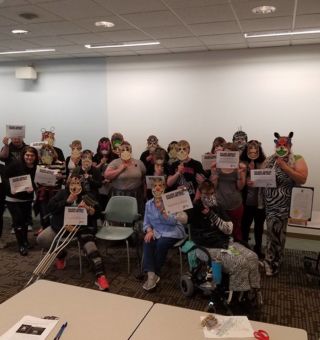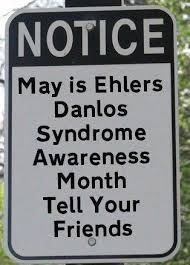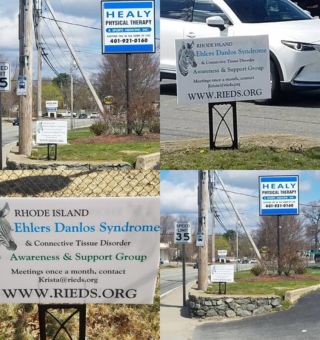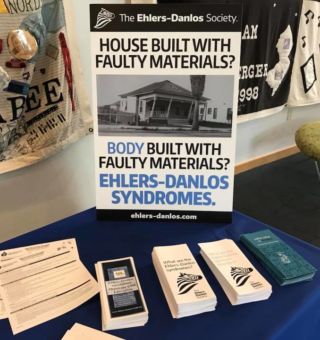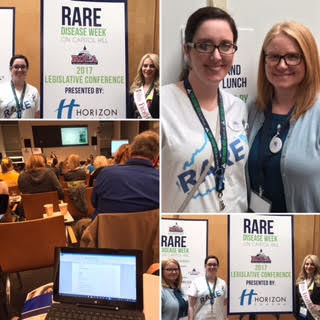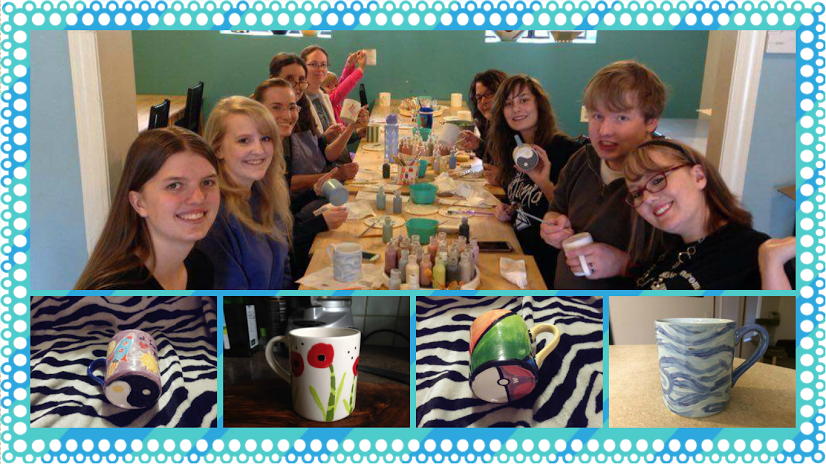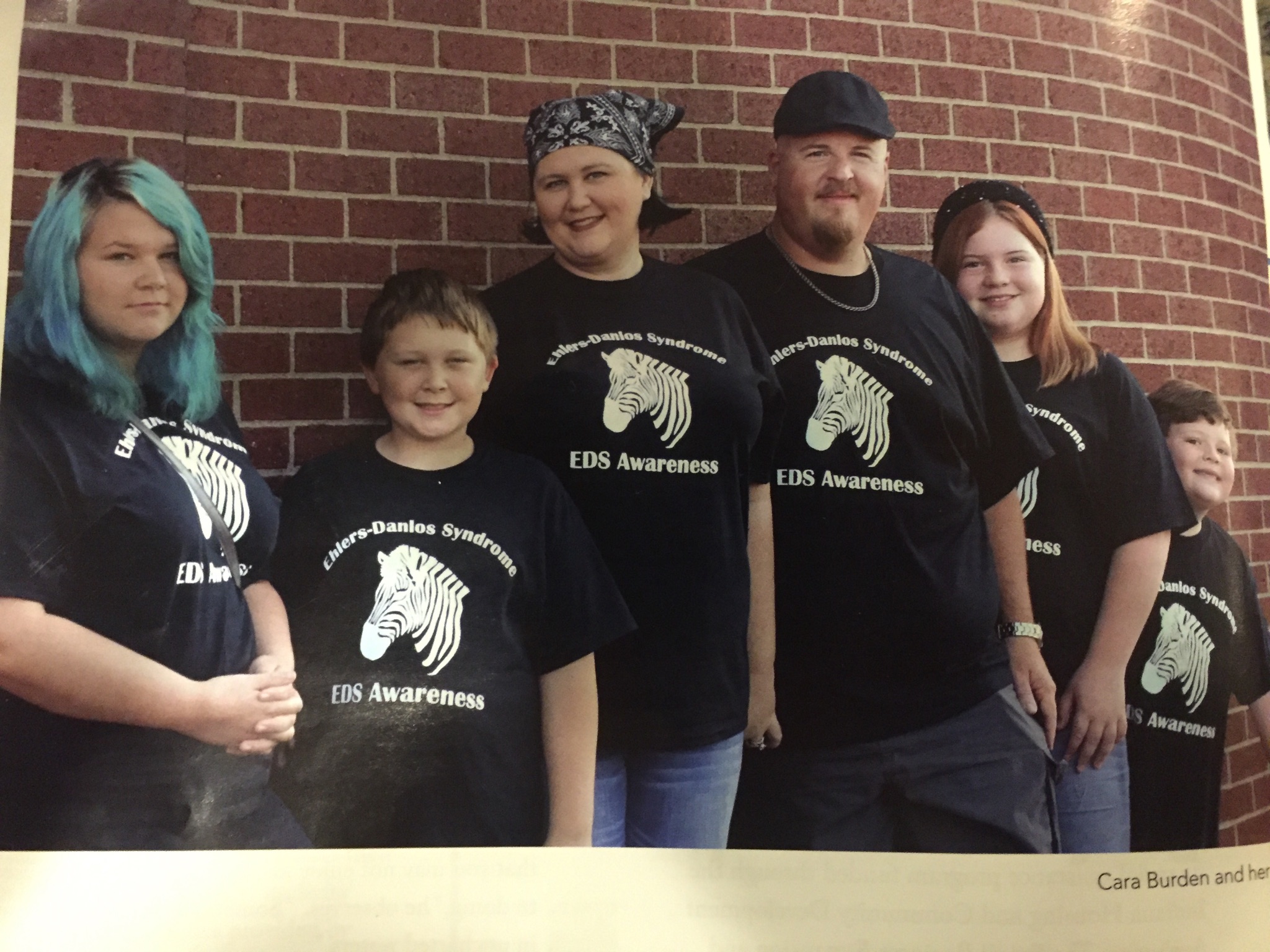Suicide Prevention Month Q & A with Dr. Delaney and PA Sarah Cook about coping strategies and how to support people with chronic illnesses
[CW: The following article discusses suicidal thoughts and ideation. This might be triggering for some people. If you or your loved one is experiencing an acute crisis, here are some phone numbers to consider in the US: The Lifeline (suicide & crisis line): 988 – The Trans Lifeline (trans peer support): 877-565-8860 – The Trevor Project (LGBTQ): 866-488-7386 – A list with international numbers can be found here.]
September is suicide prevention month and the Chronic Pain Partners media team brought together people from the EDS community and medical professionals to share coping mechanisms to deal with chronic pain and other symptoms of EDS, as well as helpful strategies when someone may develop a crisis due to challenges related to EDS or other difficult life situations. In this part of our interview series, journalist Karina Sturm spoke with Sarah Cook, Physician Assistant, and Dr. Susan Delaney, MD, about their decades of experience in supporting chronic pain patients.
Karina Sturm:
Hi Sarah, Hi Dr. Delaney. Thanks for taking the time to talk to me today about this very important topic: coping and suicide prevention. We all know how resilient people with EDS are, but living with chronic pain can have an impact on our mental health. Dr. Delaney, can you explain to our readers how living with a chronic illness like EDS may impact a person’s mental health?
Susan Delaney:
One factor that can impact a chronic pain patient’s mental health is the sense of being alone. The feeling that your medical providers don’t get you, your partner does not get you; maybe nobody gets you. They could feel alone, trapped in their bodies, and like nothing can or will ever change. Of course, that’s not true. Things can change. There are always new medical treatments that will be developed.
A person with a chronic illness might also see themselves as a burden to others; they might be hopeless and in psychological pain, and all of these could predispose them to the continuum of suicidal thoughts. The end of this continuum is really dangerous.
Sturm:
Can you explain a bit what you mean by “continuum”? Where does the continuum start, and where does it end?
Delaney:
A person might have fleeting suicidal thoughts. Something along the lines of “I wish I could lay down here and go to sleep and never wake up because it would be better for everyone else.” Those are not dangerous thoughts, but they are thoughts that need intervention. The other end of the spectrum is when a person has a plan, and that’s extremely dangerous.
Sturm:
How does a person get from one side of the spectrum to the other side? Are there specific risk factors?
Delaney:
It is mostly loneliness, hopelessness and helplessness, in addition to a lack of buffers and connectedness. In general, people are more suicidal and more capable of suicide if they’re intoxicated. Substance abuse is not the way to cope with anything. Increased anxiety and decreased sleep are also factors that can increase suicidality or movement toward it.
Sturm:
Is there anything that you recommend the person can do to help themselves in a situation like that or to prevent a crisis from escalating?
Delaney:
One of my favorite coping strategies is part of cognitive behavioral therapy. Write on a three-by-five card or create a list on your phone to write down something that’s 100% true. So a person could write something like, “I’m feeling hopeless now, but it’s temporary. I’ll feel better by the morning.” Or something similar to that. Then a person would read it whenever needed. This can also be combined with a pleasant smell. I had a patient who loved lavender and put lavender oil on those cards. When she reads the cards, it creates a conditioned response to the smell of lavender. The smell impacts the oldest part of the brain, the “reptilian brain.” Fear, helplessness and hopelessness all come from the reptilian brain. With this cognitive behavioral therapy tool, we actively change our brain structure.
Sarah Cook:
Another way to say it is that this kind of therapy enhances the process of neuroplasticity – changes in the brain that can improve cogniton and your ability to “think straight.”.
One strategy that I would suggest is to have contact information for emergency mental health resources available AHEAD of when you (and anyone else in your immediate support system) might most need them. When you’re upset or anxious and headed for rock bottom, the emotional centers in your brain can become easily overwhelmed, impairing your cognition. One might include suicide hotlines, any mobile crisis units*, the nearest mental health hospitals or facilities that can do emergency assessments and intakes, as well as the contact information for a person or two you can trust to listen to you and take your concerns seriously (who you might want to prepare for this possibility up front). In the US, the National Alliance on Mental Health (nami.org/help) is an excellent place to start to find the specific local services available and their contact info.
Sturm:
We’ve already talked a little about coping, but can you elaborate on how people with EDS can deal with all the negative experiences we make all the time, for instance, when interacting with healthcare professionals. What are good coping strategies?
Delaney:
If you have a sleep disorder because of depression, anxiety, or pain, you should be working with your provider to get you a good seven to nine hours of sleep every night, because everything about your mental health is going to improve, including your ability to manage chronic pain. There might also be medication one may consider. For instance, duloxetine (branded as Cymbalta in the US). It seems to reprogram the brain to stop overreacting to pain stimuli. The old tricyclic antidepressants in a very tiny dose can also help with chronic pain.
Cook:
One thing I recommend is putting up a “shield” whenever you see a new doctor and not having any real expectations. I like to put healthcare professionals new to my care team on probation until we’ve built a good therapeutic relationship; until I can feel like I can trust that person. It’s very important to reserve that part of yourself to avoid being too vulnerable at first.
Delaney:
The strategy with the card might work here too. You could have one card in your pocket when you are at the doctor’s office and touch it during the visit.
Cook:
Right. One thing I would like to add is that many zebras and their caretakers find that in order to increase their resilience, it helps to widen their support systems to include other people that are dealing with the same issues. Those people are more prone to understand what you’re going through, and they can share what they’ve learned on their journeys.
Delaney:
Another helpful coping tool is journaling. I like one specific technique while journaling: You have two colors of pens. Then you write a question to yourself with your dominant hand. Afterwards, you answer it with your non-dominant hand and in a different color. I have experienced incredible healing and wisdom from that non-dominant hand.
Sturm:
That is super interesting. I’ve been journaling for the last 25 years of my life. It is my main coping strategy. But I’ve never tried to write with both hands.
Cook:
It works by helping connect both halves of your brain, enhancing that neuroplasticity I spoke of earlier.
Sturm:
Those are all great suggestions. However, if all of these strategies fail and the person still develops suicidal thoughts, what can the people around this person do to help?
Delaney:
They should ask, “How bad is it? Are you thinking of hurting yourself?” And if the person is, they should invite them to the hospital. Or, if they don‘t want to go, you may have to call 911.
Cook:
Mobile crisis units can help too. That is a service staffed by social workers and other personnel specially trained to provide emergency assistance in the event you are having suicidal thoughts (or other mental health crises). Calling 911 *can* sometimes lead to police who might not be (adequately) trained to help you and your loved ones de-escalate the situation and get you the mental healthcare you need. This, unfortunately, *can* lead to a person with suicidal ideation being taken to jail instead of the hospital, or to violence against the person needing help.
Sturm:
The last question to end this interview with: Can you summarize your top best tips to stay mentally healthy when you live with a chronic illness like EDS?
Cook:
One way of increasing your resilience in the face of the challenges that a lot of us face with Ehlers-Danlos is to do everything you can to reduce the stressors related to the medical illness and adjust your coping mechanisms to deal with those, whether that be medication, counseling or physical therapy to get yourself in a better place physically so that it’s not dragging you down.
Sturm:
Thanks, you both! This was really interesting.
Delaney:
It has been a pleasure to talk with you both.
Cook:
Thank you for having me.
Karina Ulrike Sturm
September 2022










